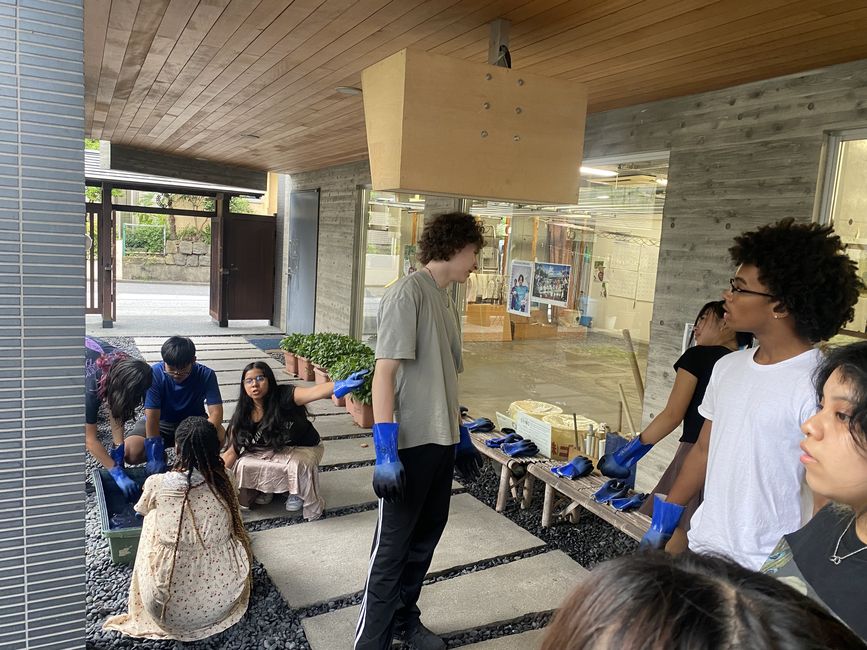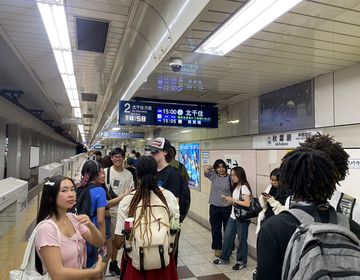Discovering Aizome- Japanese Indigo Dyeing
Tokyo Language and Culture students experienced a lesson in traditional Japanese indigo dyeing at Some no Sato, a dyeing shop that was established over 100 years ago in Ochiai, Shinjuku. The Shinjuku area has a long-lasting history of fabric dyeing as the rivers that run through it called the Kanda and Myoshoji rivers, were once filled with dye craftsmen rinsing their kimonos silks. During the Edo period, this area was the center of the dyeing industry. Before beginning their experience, students learned about the history of silk and cotton dyeing and different types of techniques.
After being given the historical context, students were taken step by step through the process by the instructors, first folding and tying up their fabric with rubber bands and wooden weights, with many students experimenting with securing marbles inside the fabric with the bands. After securing their fabrics, it is time to dye them. Students made their way to the outside area, where the shop grows their indigo plants, and were given the choice of dying their fabric light or navy blue. They submerged their fabrics in the dye for 3 minutes and then moved to a water tub to rinse the dye out, and then to a third tub to give it a final rinse, the dye turning from green to blue as it oxidized. Finally, the students opened up their fabrics uncovering their original patterns, and hung them to dry in the hot sun before taking them home.
Related Posts
How I Made $2,000 Referring Other Students on Summer Abroad Programs
Read this blog from one of our past Global Ambassadors and find out how she was able to earn rewards with CIEE and encourage other students to study abroad!
Host Family Weekend
On the final weekend in Japan, students spent time with their host family. This weekend, host families prepared activities for students. Some students learned how to make Japanese food from... keep reading
Japanese Calligraphy
After school, we went to Nishi Asakusa for a calligraphy workshop. On the way, we received beautiful flowers from a newly opened flower shop, experiencing unexpected Japanese hospitality. Upon arrival... keep reading




